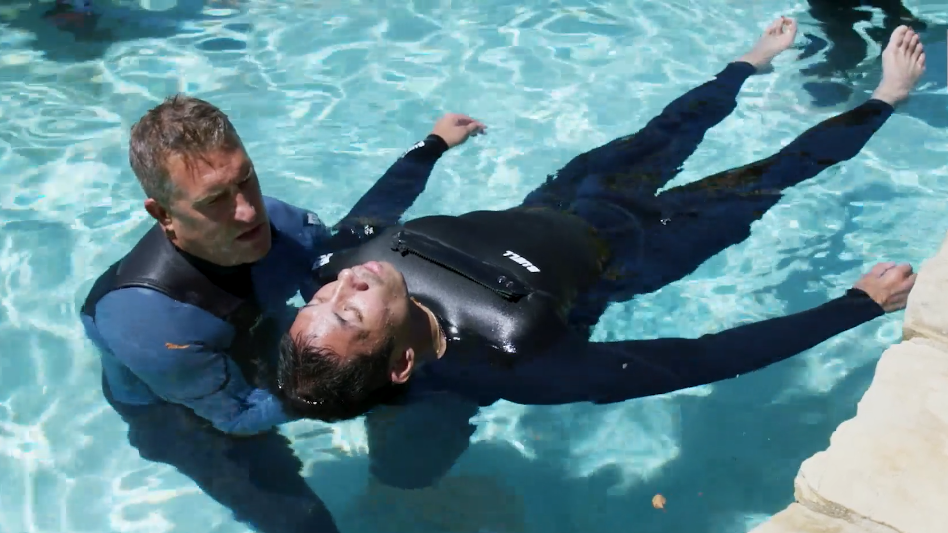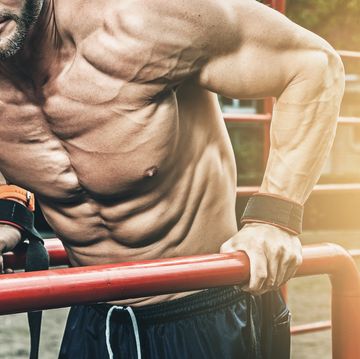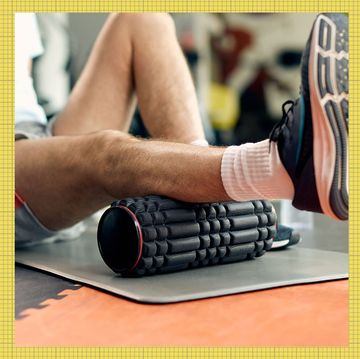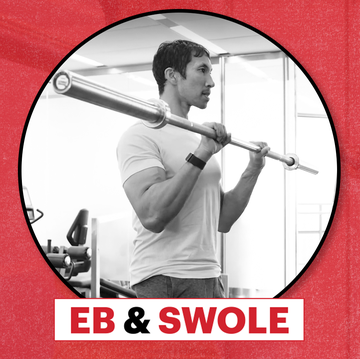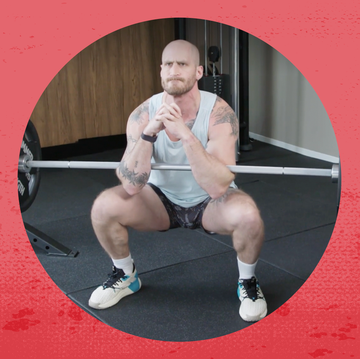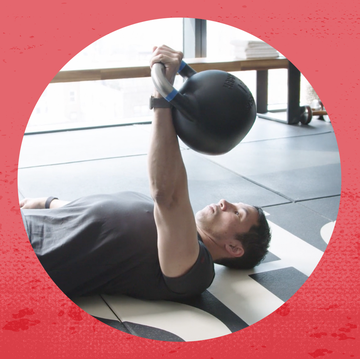When it comes to training, many of us spend a fair amount of time devoted to designing the exercise routine itself (like how to get that extra pump on chest day), our form, gear, and recovery. One category we often overlook? The most basic and important thing of all: Breathing.
The MH team met up at the Red Bull Performance Camp with Kirk Krack, freediving coach at Performance Freediving Academy, to learn breathing drills that he uses to help people learn to optimize the lungs. Men’s Health fitness director Ebenezer Samuel, C.S.C.S. served as the guinea pig. Check out the video to learn how Krack helps people optimize the ole inhale and exhale. Below, a brief rundown of some things we learned.
“Our lungs are balloons trapped inside of cages," explained Krack. "Our lungs have the ability to expand more than the cage, than the ribs and the muscles… so how do we increase that by doing certain training and stretching routines? Specific to freediving, we can increase our lung volume up to 15 percent and more.”
What's more, Krack added that by holding our breath underwater, we can push more red blood cells into the circulatory system. “So that's like a natural form of doping,” he said.
Krack noted that there's definitely a level of risk in holding our breath. “We're going through a level of hypoxia of varying degrees of lack of oxygen That could potentially get to the point where we can't make the decision to come on up and that could be a fatal thing if you were doing it by yourself in a pool,” he said. “So this is something we always do with a trained buddy, knowing what the procedures are and what to look for, the hazards, and as well as how to do it properly, is really important.”
3 Breathwork Drills for Better Lung Capacity
Here are the three drills Krack put Samuel through. Don't give these a try on your own; even at the seminar with Krack leading the exercise, everyone trained with a partner.
Drill 1: Ventilation
This inhale-and-exhale cycle is a boon for stress relief. “This is really great for focus control and stress and just kind of getting yourself back into your headspace and your game as well as calming you down and relaxing you because it's really about lowering the heart rate over those course of breaths or of the minutes that you're breathing like that,” said Krack.
Drill 2: The Purge
You’ll incorporate your chest into this one. With high intensity exercises, you accumulate carbon dioxide, said Krack. “That's why you're breathing heavily. So if you breathe with more intention, to get rid of the CO2, that's going to prep you and get you ready for the next exercise.”
Drill 3: Peak Inhalation
Time to fill those lungs up, folks. For most people done in a safe way with a trained partner or at home out of water, Krack said it’s good to aim for a two-minute breath hold. “And we're going to go from the diaphragm, the lower to upper chest. We're going to actually engage the shoulders and the neck as well, trying to get as much volume into our lungs,” said Krack. “It's our main fuel tank.”
Worth noting: In addition to being physically tough, this isn’t easy mentally, either. Give yourself from grace if this doesn't come easy. “Breath holding is part of our primal fears," Krack said. "It's fear of falling, being eaten, and this one suffocation."
